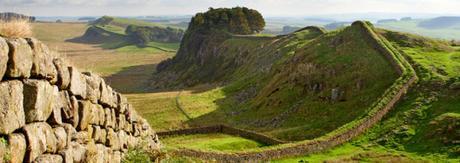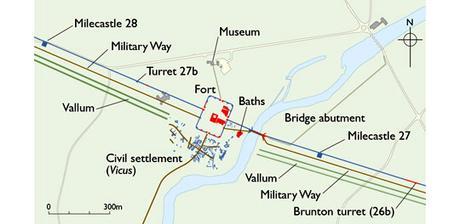Running through the glorious North Pennines, Hadrian's Wall remains a testament to the power and vision of rulers at the height of the Roman Empire - and the wildness and strength of their adversaries, Britain's Northern tribes.

If you have an interest in the history of our islands, the North East of England makes for a very satisfying experience. The region offers prehistoric settlements, remains of Roman occupation and amazing buildings giving glimpses into every stage of history, as played out in these dramatic landscapes.
Hadrian's Wall
The Wall itself, built at the command of Emperor Hadrian was essentially a fall-back position for the frontier, abandoning the Antonine Wall to the North between Forth and Clyde, to a more defendable, though longer 80 mile line across from the Tyne to the Solway Forth.
There are amazing remains of the wall for much of its length, with some of the most illuminating being at Housesteads Fort, Walltown Crags, Birdoswald and Chesters.
As well as this World Heritage site, Hadrian's Wall itself, the region has plenty of other sites that offer a more in-depth glimpse into the military and social life of Roman citizens at the Frontier of Empire. There's more about the other Roman remains in the North Pennines on our website but here's an idea for a quick day tour to catch some of the main features along the Wall.
As many of the properties are managed by English Heritage, it will be very much worth your while to consider a Membership, giving free entry and parking at any site in England.
Tour Along the Wall
As the wall started in Newcastle upon Tyne, head for Wallsend and the Segedunum Museum which is well signposted (in English and Latin!). This is also hosting a British Museum exhibition on Roman Britain in 2015. Here you'll find a very extensive Roman fort with a reconstruction of the original bathhouse which gives a real idea of how the legions relaxed.

Head West on the A69 and take the turn off for Heddon on the Wall along B6318 towards Chollerford. From here along the Military Road, you will see farms and buldings with tell tale signs of having been constructed from reclaimed Roman stones - often the huge blocks used as corerstones. From where you cross over the dual carriageway, you'll see the earthworks of the Vallum on the left of the road.
As you cross the A68 you'll see the signs for Corbridge, the Roman town of Coria. You can if you wish head down and take in the remains of the town and its granaries there.
Heading towards Chollerford, another well-preserved section of wall shows itself at Planetrees. This makes a nice 30 min walk up from the car park next to the river if the weather allows. Also close by is Brunton Turret, signed from the road. At the bottom of the hill, before crossing the River Tyne, there are the massive remains of the Chesters Bridge Abutment, the key river crossing point. You can imagine how awe inspiring to the local population a bridge on this scale must have appeared, when Celtic building was largely wood, wattle and daub.

Heading West you'll pass Black Carts Turret, and at Carrawburgh, stop off to view the Temple of Mithras at Brocolitia. The Mithraic cult was a mysterious all-male cult very much embraced by the Roman military. A few miles West is Housesteads, one of the most atmospheric sites, giving a real impression of how bleak this must have been for an italian or North African legionary, posted to guard the wall!
To the West of Housesteads, take road on the left leading to Bardon Mill and about half a mile down, the Vindolanda site is on your right. This is privately managed and has proven to be an incredible window into the lives of the real Romans in the region. You can see some of the private letters from Centurion's wives or lists of household goods in the amazing tablets that continue to be uncovered in excavations at the site.
Back on the B6318 it continues west with fewer interesting remains as you head west, and joins up with the A69 again at Greenhead. There is the Roman Army Museum at Walltown, which gives some great insights into the military legacy of the Empire.
There's really not much else in evidence as you travel West, though the Hadrian's Wall path continues to the site of the end defensive fort at Bowness on Solway. Beyond Carlisle, the wall was an earth and palisade construction during the early period to be replaced by a stone construction later on.
Other Resources
There are lots of resources online that can enhance your knowledge. Look out particularly for the fairly scholarly but very interesting Oxford University site detailing the contents of the Vindolanda Tablets. There are also other resources on the Roman Sites Website Page.
Staying in the North Pennines
I hope that has whetted your appetite to find out a little more about the Roman North East and explore more of the remains. There is a whole lot more as well to make a stay in the region well worth your while such as Durham Cathedral, the Pennine villages and amazing hillwalking.
Our cottage in Rookhope, upper Weardale is ideally placed to reach much of the Wall's attractions and other Archaelogical sites across the North. You can find out more and book online on the main section of the Terrace Cottage Website.
We look forward to welcoming you to the North Pennines!Chris Tradgett
